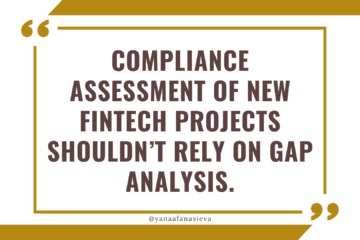Geo-expansion in FinTech – How to Plan It? What to Keep in Mind When You Launch a New Country?
I wanted to talk to you about geo-expansion and how to prepare for them.
Here are the most common questions that come up when you decide to offer your services in a new country.
Which countries to launch first? All at once or in sequence?
Ideally, the sequencing of a new country’s launch should be based on objective metrics, such as the size of the country, app downloads from that country, number of signups for your newsletter or waitlist, and number of social media followers. You should have some idea where your product will be well received and popular.
There are generally 2 options for how to go about launching a product:
- Launch new countries one by one, especially where it is linked to physical activities on the ground, such as shipping cards, opening support centers, engaging sales teams, localizing websites, offering services in the local language, and supporting local payment options.
- Open all countries where you can serve people (just in English) and see what happens, and then decide if you need to localize any customer experience, what resources you need, whom to hire, what are expected volumes are, etc.
Practical aspects to consider when you open a new country:
- Is language support needed (both to answer CS questions, but also to be able to read and understand proof of address documents and corporate registration documents)?
- Are there specific documents that are either acceptable or not acceptable from that country and if so, do you need to publish the FAQ for the users (e.g. do you accept Russian domestic passports, do you accept old-style drivers licenses without security features, which documents your KYC vendor can read…)? Ideally, you have a list of acceptable documents from your KYC vendor.
- Are there any specific concerns around compliance in that country (e.g. if you launch Russia, you still cannot work with the Crimea region)?
- Are there any specific limitations about your industry (e.g. US or India for cryptocurrency services and CFDs)? Some countries prohibit certain types of services (e.g. gambling).
- How people are going to send you funds, top up and withdraw? – e.g. Can they send bank transfers and what does it mean in terms of prices and fees you display and the execution time you communicate? (e.g. in some cases non-SEPA transfers can result in “surprise fees” within SWIFT, they can also result in bounce-backs, there needs to be clarity around how you communicate the bank account details for non-SWIFT countries).
- Your bank or credit card processor may have a list of prohibited countries. You may also not have this list but they suddenly are alerted by higher volume transactions from certain countries and suspend your services.
- What does all of that mean for your T&Cs – do you need separate sections for separate countries?
Compliance requirements and KYC processes:
- Ideally, it is better to start with a semi-silent soft launch in each new country to uncover the issues and see what types of documents are submitted by customers, what questions and friction points come up, and how long it may take to fix them. Then based on the learnings, FAQ is published and you set expectations with customers on the types of documents accepted and what needs to be translated, pricing, currency conversion, the format of the fields where you collect address or ID document numbers or national registration numbers, etc.
- Compliance review of all customer-facing messages needs to be very careful so that you don’t appear to be directly targeting specific markets when you launch a cross-border service. It is “safer” to make it look like you don’t specifically target retail/individual users and focus communications on “international businesses with a presence in countries such as ….” – local authorities are always more concerned about consumers than businesses or traders.
Communicating with your home regulators and/or local authorities:
- Position geo-expansion as an ancillary activity/ testing phase first for the home regulator and ideally stay under the radar with local authorities as long as possible.
- With your home regulator, you can propose a list of 3-4-5 countries and prepare a brief overview of why these countries are low AML risk and easy to maintain. Potentially state in your notification to the home regulator that due to unknown AML risks, certain services are not available to new customers or they will have lower transactional limits.
- With host regulators, if they reach out to you, position your service as a reverse solicitation, a passive acceptance and testing of the interest from the new markets (and act accordingly).
- Prepare and offer to share financial projections indicating that volumes from new countries are likely going to contribute under 1-2% (e.g. very insignificant) of your total volumes during the first months so that you will be capable to manage any risks or surprises.
Do you see now how it starts making sense and can work for you, right?




